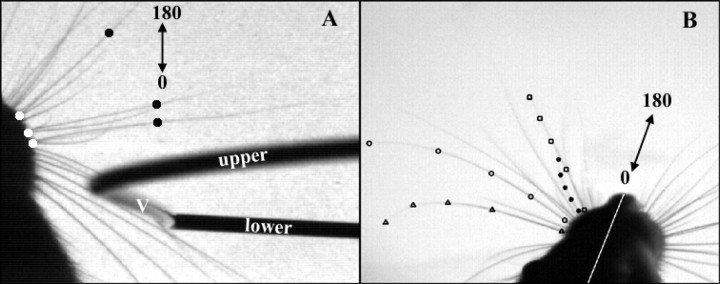Figure 2.
Method for tracking the angular position of whiskers during deflection past an object and during free whisking in air. Whisker angles are measured relative to head angle, with 180° representing rostral and 0° caudal. A, A single frame from a video of the rat driving its macrovibrissae past a metallic “C.” The vertical portion of the “C” (labeled “V”) is ∼12 inches in height and appears foreshortened in the image. The horizontal bar labeled “upper” is well above the rat's head. The horizontal bar labeled “lower” is well below the rat's head. The more caudal whiskers are clearly stuck behind the vertical bar, while the more rostral whiskers are free to move in front of the bar. Whisker angles were defined as the angle formed by the base of the whisker (white circles) and a point some length out along the whisker (black circles), relative to the angle of the head. B, The full shape of each whisker was tracked during free whisking behavior. Whisker angles were determined from the angle between the base point and the last point out along the whisker, relative to the head angle. Triangles, filled and open circles, and squares exemplify the tracking of four separate whiskers.

